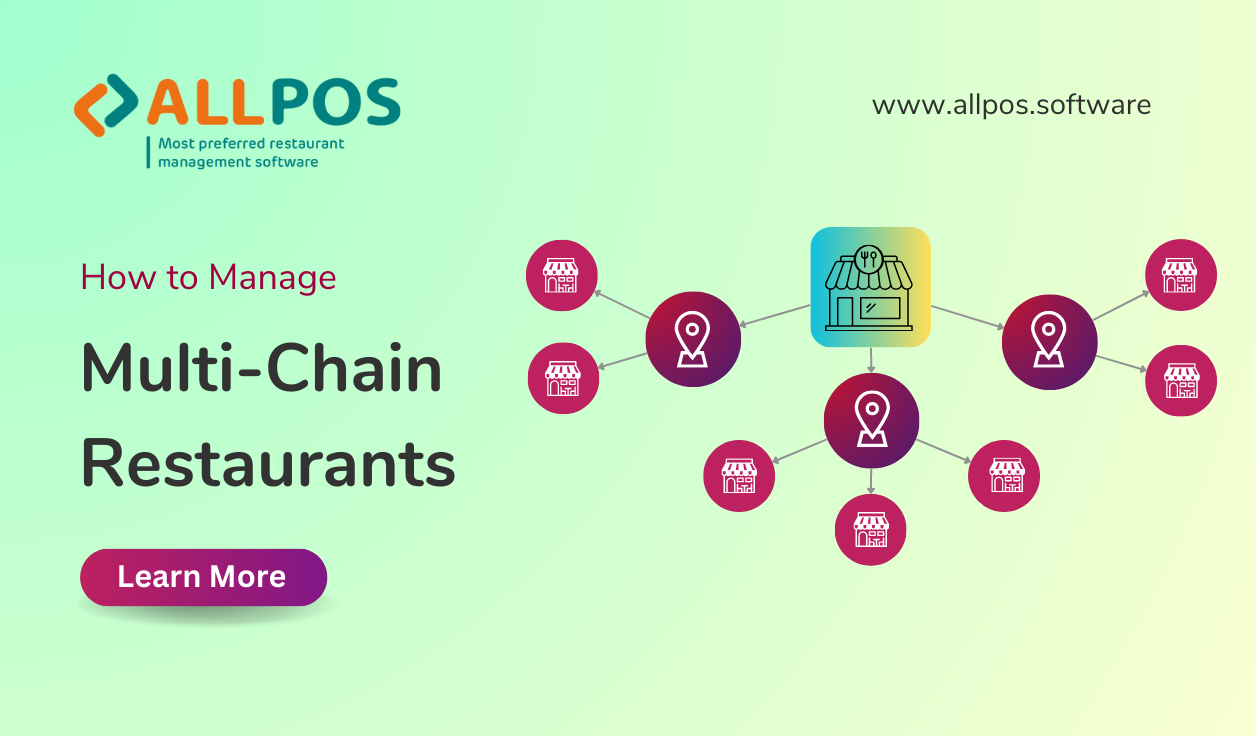How To Manage a Multichain Restaurant Business: A Modern Approach

Welcome to the world of restaurant management in the 21st century! The
restaurant business has come a long way from its humble beginnings, and today,
managing a multichain restaurant business requires a unique set of skills and
strategies. In this blog post, we will explore the intricacies of managing a
multichain restaurant business in a modern and efficient manner. We will draw
insights from the operations of a real-world example, Domino's in INDIA, to
illustrate key principles and practices.
To effectively manage a multichain restaurant business, we will break down the
content into several key silos, each addressing a crucial aspect of the
operation. These silos will serve as a comprehensive guide to help you navigate
the challenges and opportunities of this dynamic industry.
Understanding the Multichain Restaurant Landscape
Before delving into the specifics of restaurant management, it's essential to grasp the overarching landscape. This section will explore the growth of multichain restaurants, their advantages, and the challenges they face in today's competitive market.
Example: Domino's - India - Their Operations
To truly understand modern restaurant management, we'll take an in-depth look at Domino's operations in India. This successful multichain restaurant exemplifies effective strategies that can be applied to any similar business.
History and Expansion:
Domino's Pizza, a globally recognized brand, entered the Indian market in 1996 with its first outlet in New Delhi. Since then, it has expanded rapidly, now boasting an impressive 1,567 outlets across the country. This growth showcases the immense potential of the Indian market and the success that can be achieved with the right strategy.
Menu and Innovation:
Domino's in India has adapted its menu to cater to the diverse and evolving tastes of the Indian consumer. They've introduced a wide range of vegetarian and non-vegetarian pizzas, incorporating local flavors and ingredients. Innovations such as the "Paneer Makhani Pizza" and "Chicken Tikka Pizza" are prime examples of their commitment to understanding local preferences while maintaining the core pizza offerings loved worldwide.
Technology Integration:
Domino's in India has seamlessly integrated technology into its operations. The brand's user-friendly mobile app and website enable customers to place orders easily and even track their deliveries in real-time. The use of technology not only enhances customer convenience but also provides valuable data for analysis and decision-making.
Quality Control:
Maintaining consistent quality is a top priority for Domino's in India. They have implemented rigorous quality control measures to ensure that each pizza meets the highest standards. This commitment to quality has earned them the trust and loyalty of Indian consumers.
Average Sales per Day:
Domino's in India achieves remarkable daily sales figures, with an
average range of ₹0.75L to ₹0.80L per outlet. This impressive
performance underscores the brand's popularity and the effectiveness of
its operational and marketing strategies.
Domino's Pizza in India serves as a prime example of how a multichain
restaurant can thrive in a diverse and competitive market. Their ability
to adapt, innovate, and prioritize quality has made them a household
name and a dominant player in the Indian food industry.
By studying their operations and strategies, restaurant managers and
entrepreneurs can gain valuable insights into how to succeed in the
multichain restaurant business in India and beyond. The story of
Domino's in India is not just a success in business but a testament to
the power of understanding local culture, embracing technology, and
consistently delivering exceptional customer experiences.
Building a Strong Brand Identity
Creating a strong brand identity is crucial for a multichain restaurant. This section will provide insights into brand development, marketing strategies, and the importance of consistency across locations.
Supply Chain Management
Efficient supply chain management is the backbone of any successful restaurant chain. Learn how to streamline the sourcing, distribution, and inventory management processes to maintain product quality and reduce costs.
Staff Training and Development
Your staff is your most valuable asset. Discover strategies for recruiting, training, and retaining top talent to ensure excellent customer service and operational efficiency.
Customer Experience and Feedback
In the age of social media and online reviews, providing an exceptional customer experience is most important. Explore strategies for gathering feedback, addressing complaints, and turning customers into brand advocates.
Embracing Technology
Technology is rapidly reshaping the restaurant industry. This section will cover the latest technological trends, including mobile apps, online ordering platforms, and data analytics, and how to leverage them for business growth.
Sustainability and Social Responsibility
With increasing awareness of environmental and social issues, multichain restaurants need to adopt sustainable practices and engage in social responsibility initiatives. Learn how to make your business more environmentally friendly and socially conscious.
Challenges and Future Trends
The restaurant industry is ever-evolving. Explore the current challenges facing multichain restaurants and emerging trends that can shape the future of the business.
Conclusion
Managing a multichain restaurant business in the modern era is both exciting and
challenging. By following the principles and practices outlined in this
comprehensive guide, you can navigate the complexities of the industry and build
a successful, sustainable, and customer-centric restaurant empire. Stay tuned as
we dive deep into each of these silos in subsequent articles, providing you with
actionable insights and expert advice to help you thrive in the multichain
restaurant business.
Remember, success in this industry requires a dynamic approach, a commitment to
excellence, and a passion for delivering exceptional dining experiences. So,
let's embark on this journey together and uncover the secrets to managing a
multichain restaurant business in the 21st century.